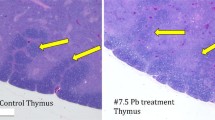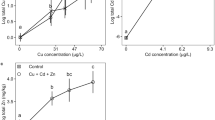Abstract
Diets that contained various levels of supplemental Aroclor® 1242 or Aroclor® 1016 were fed to mink and ferrets to investigate the chronic toxicity of these PCBs in two closely related species.
In mink, Aroclor 1242 was found to be more toxic than comparable or higher levels of Aroclor 1016. The Aroclor 1242 diets caused complete reproductive failure at levels as low as five ppm of the diet. Aroclor 1016 impaired reproduction less than Aroclor 1242. Although fewer females whelped and the four-week kit weights were less than the control animals, no outward signs of abnormalities beyond their smaller size were found in the kits whelped and nursed by dams fed Aroclor 1016.
Ferrets were more resistant to the effects of either PCB mixture than were the mink, as noted by the lower mortality rate on the Aroclor 1242 diet and the almost normal level of reproduction on the Aroclor 1016 diet. Feeding Aroclor 1242 at 20 ppm resulted in complete reproductive failure, but was not fatal to adult ferrets. This finding is in sharp contrast to the 100% mortality of adult mink fed the same level. Although the chlorine content is similar in both compounds, Aroclor 1242 has a higher percentage of molecules with five or more chlorines per biphenyl. This difference in higher substituted biphenyl isomer content and/or the reduced levels of contaminants in the Aroclor 1016 mixture may be of major importance in evaluating the toxicity of these compounds.
Similar content being viewed by others
References
Allen, J. R., and D. H. Norback: Pathobiological responses of primates to polychlorinated biphenyl exposure, p. 43. Nat. Conf. on Polychlorinated Biphenyls Nov. 19–21, 1975, Chicago IL., EPA, Washington DC (1976).
Anonymous: Troubled fish in troubled waters: PCBs in the Great Lakes and the control of toxic substances. Research News24, 24 (1978).
Aulerich, R. J., and R. K. Ringer: Current status of PCS toxicity to mink and effect on their reproduction. Arch. Environ. Contam. Toxicol.6, 279 (1977).
Aulerich, R. J., R. K. Ringer, and S. Iwamoto: Reproductive failure and mortality in mink fed on Great Lakes fish. J. Reprod. Fert., Suppl.19, 365 (1973).
Bowes, G., M. Mulvihill, B. R. T. Simoneit, A. L. Burlingame, and R. W. Risebrough: Identification of chlorinated dibenzofurans in American polychlorinated biphenyls. Nature256 (7/24), 305 (1975).
Clausen, J., L. Braestrup, and O. Berg: The content of polychlorinated hydrocarbons in arctic mammals. Bull. Environ. Contam. Toxicol.12, 529 (1974).
Dustman, E. H., L. F. Stickel, L. J. Blus, W. L. Reichel, and S. N. Weimeyer: The occurrence and significance of polychlorinated biphenyls in the environment. Trans. 36th N. Amer. Wildl. & Nat. Res. Conf., p. 118, March 7–10 (1971).
Goldstein, J. A., P. Hickman, V. W. Burse, and H. Bergman: A comparative study of two polychlorinated biphenyl mixtures (Aroclor 1242 & 1016) containing 42% chlorine in induction of hepatic porphyria and drug metabolizing enzymes. Toxicol. Appl. Pharmacol.32, 461 (1975).
Hansen, L. G., D. W. Wilson, and C. S. Byerly: Effects on growing swine and sheep of two polychlorinated biphenyls. Amer. J. Vet. Res.37, 1021 (1976).
Hutzinger, O., S. Safe, and V. Zitko: The chemistry of PCBs. p. 133. Boca Raton, FL: CRC Press (1974).
Kimbrough, R. D., and R. E. Linder: The induction of adenofibrosis and hepatomas of the liver in mice of the BALD (cj)strain by polychlorinated biphenyls (Aroclor 1254). J. Nat. Cancer Inst.53, 547. (1974).
Litchfield, J. T. Jr., and F. Wilcoxon: A simplified method of evaluating dose-effect experiments. J. Pharmacol. Exptl. Therap.96, 99 (1949).
Matthews, H., G. Fries, A. Gardner, L. Garthoff, J. Goldstein, Y. Ku, and J. Moore: Metabolism and biochemical toxicity of PCBs and PBBs. Environ. Health Perspectives24, 147 (1978).
Platonow, N. S., and L. H. Karstad: Dietary effects of polychlorinated biphenyls on mink. Canad. J. Comp. Med.37, 391 (1973).
Platonow, N. S., P. W. Saschenbrecker, and H. S. Funnell: Residues of polychlorinated biphenyls in cattle. Canad. Vet. J.12, 115 (1971).
Porter, M. S., and J. A. Burke: Separation of three chlorodibenzo-p-dioxins from some polychlorinated biphenyls by chromatography on an aluminum oxide column. J. Assoc. Offic. Anal. Chem.54, 1426 (1971).
Rehfeld, B. M., R. L. Bradley, and M. L. Sunde: Toxicity studies on polychlorinated biphenyls in the chick. I. Toxicity and symptoms. Poultry Sci.50, 1090 (1971).
Risebrough, R. W., P. Reiche, D. B. Peakall, S. G. Herman, and M. N. Kirven: Polychlorinated biphenyls in the global ecosystem. Nature220, 1098 (1968).
Ryland, L. M., and J. R. Gorham: The ferret and its diseases. J. Amer. Vet. Med. Assn.173, 1154 (1978).
Sanders, H. P., and J. H. Chandler: Biological magnification of a polychlorinated biphenyl (Aroclor 1254) from water by aquatic invertebrates. Bull. Environ. Contam. Toxicol.7, 257 (1972).
Schaible, P. J.: Nutrition and Feeding. Sect. III. In: The Blue Book of Fur Farming. Milwaukee: Editorial Service Co. (1970).
Tucker, E. S., V. W. Saeger, and O. Hicks: Activated sludge primary biodegradation of polychlorinated biphenyls. Bull. Environ. Contam. Toxicol.14, 705 (1975).
Wassermann, D., M. Wassermann, S. Cucos, and M. Djavaherian: Function of adrenal gland-zona fasciculata in rats receiving polychlorinated biphenyls. Environ. Res.,6, 334 (1973).
Author information
Authors and Affiliations
Additional information
This publication results from work sponsored by the Michigan Sea Grant Program with funds from the National Oceanic and Atmospheric Administration; Office of Sea Grant, Grant No. 04-M01-134; and from appropriations made by the Legislature of the State of Michigan.
The U.S. Government is authorized to distribute reprints for governmental purposes not-withstanding any copyright notations that may appear.
Published with the approval of the Michigan Agricultural Experiment Station as Journal Article No. 9123.
Rights and permissions
About this article
Cite this article
Bleavins, M.R., Aulerich, R.J. & Ringer, R.K. Polychlorinated biphenyls (Aroclors 1016 and 1242): Effects on survival and reproduction in mink and ferrets. Arch. Environ. Contam. Toxicol. 9, 627–635 (1980). https://doi.org/10.1007/BF01056942
Received:
Accepted:
Issue Date:
DOI: https://doi.org/10.1007/BF01056942




